The Porsche Cayenne Turbo S E-Hybrid Wants You to Have Everything
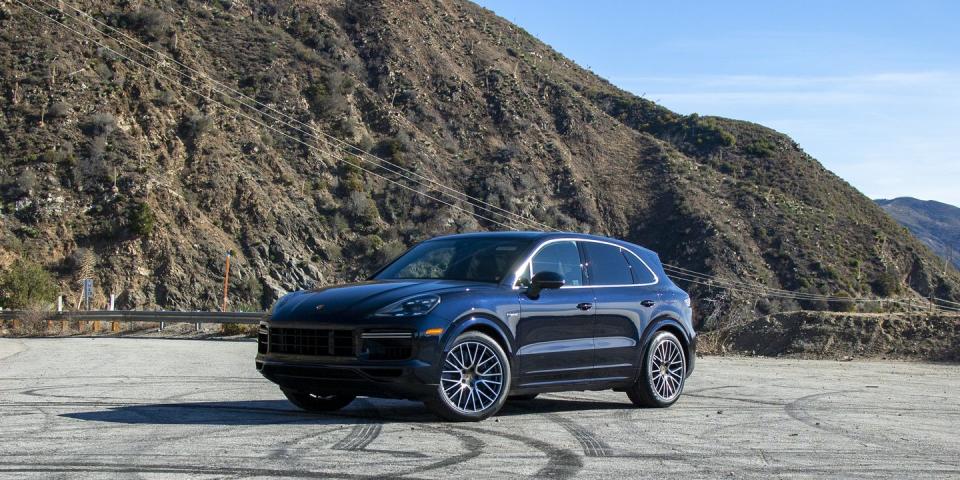
"Hearst Magazines and Yahoo may earn commission or revenue on some items through the links below."
Paul Frère's 1973 book The Racing Porsches, like all books from the Belgian Le Mans winner and longtime Road & Track contributor, is a fascinating read. It provides a very technical look at Porsche's first prototype racing era from the 1964 904 through the 917/10 Can-Am of 1972, and is a fascinating look into the young company. At the time, Porsche was hell bent on saving weight, building cars with exotic and often dangerous new materials, and generally trying to shave grams anywhere possible, a famous if performative example being the 917’s drilled ignition key.
Those racing Porsches were lightweight single-purpose machines. This Porsche, the Cayenne Turbo S E-Hybrid, is not.
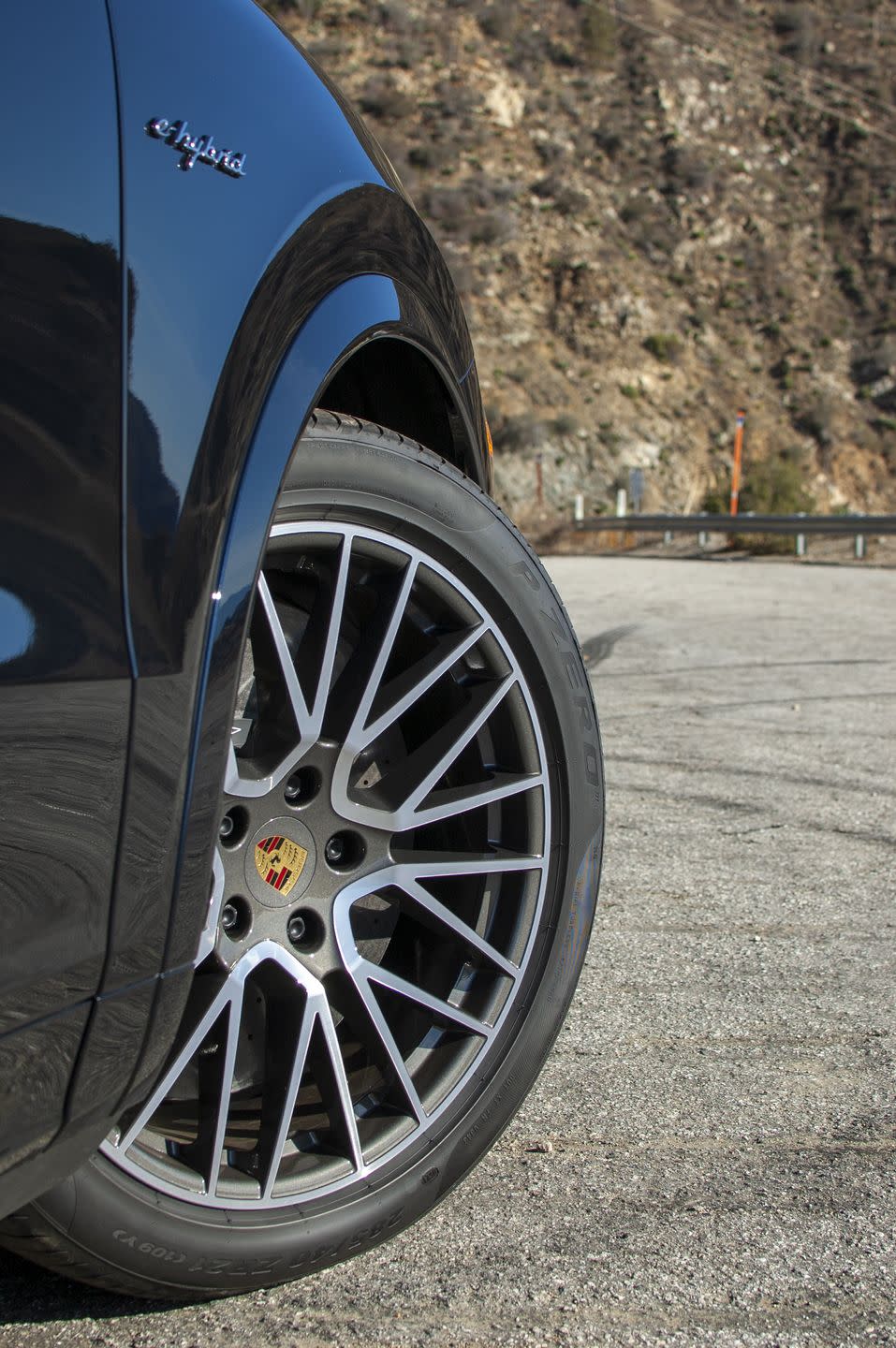
Instead, it's a supremely luxurious and practical family runabout with a raucous twin-turbo V-8, a modicum of off-road capability, a shocking amount of canyon-road capability, and a big battery/electric motor combo for zero-emissions cruising and somewhat respectable fuel economy. Its brief is nearly as long as its name. And it weighs 5623 pounds.
I don't draw this contrast to suggest that the Cayenne Turbo S E-Hybrid isn't deserving of a Porsche badge. On the contrary, I have a broad definition of what a Porsche should be: a superbly engineered driver's car. This Cayenne most certainly is that. I simply find the comparison fascinating, a great reflection of what Porsche is these days in relation to what consumers want from their cars.
The weekend after the L.A. Auto Show, Porsche lent me a Cayenne Turbo S E-Hybrid outfitted with the most excellent combination of Moonlight Blue Metallic over Truffle Brown. The typical gaudy Porsche highlighter-green hybrid accents were deleted.
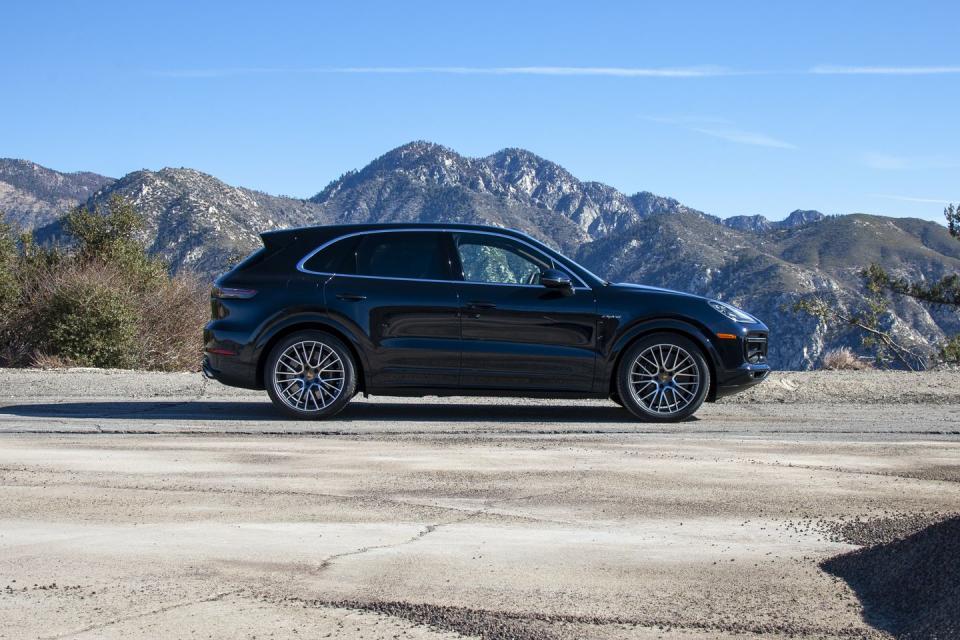
So now for a brief refresher on the Cayenne Turbo S E-Hybrid and how it fits into the extensive Cayenne lineup. As the name implies, this Cayenne combines the 541-hp 4.0-liter twin-turbo V-8 from the Cayenne Turbo with a 134-hp electric motor, which is powered by a 17.9-kWh battery. Total system output is 670 horsepower and 663 lb-ft of torque (the reason 541 and 134 don't add up to 675 hp is that the engine and motor make peak power at different points, as is the case with most hybrids). Being a Porsche Turbo S model, most of the big-ticket performance hardware is standard; here, that includes air springs with adaptive dampers, active anti-roll bars, and carbon-ceramic brakes.
Plug-in hybrids represent an interesting proposition. On paper, a PHEV seems like the best of both worlds, but they're typically very heavy; this car is almost 500 pounds heavier than a regular Cayenne Turbo. And the battery has to be charged in order for the hybrid system to have a real-world benefit.
As with all Porsche hybrids, the Cayenne Turbo S starts off in E-Power mode; even in a post-Taycan world, silent motoring in a Porsche is a novelty. In reality, most driving in a Cayenne Turbo S will be in Hybrid Auto, which blends the ICE and electric motor as necessary, so the V-8 only comes on when needed. But it's an event when it does; suddenly, 134 quiet horsepower becomes 670 noisy horsepower, and acceleration is prodigious. Porsche is among the best at managing the complexities of a hybrid drivetrain, and everything here feels seamless. Transitions between electric and gas power are smooth, and you can't tell by feel that the brake pedal blends regenerative and friction braking.
In normal driving, the addition of electricity makes for a better Cayenne. Again, as long as the battery is charged surprisingly good fuel economy is possible; a trafficky drive from Honda's headquarters in Torrance to Koreatown saw 36 mpg in relaxing quiet; The Cayenne was already a great daily driver, with a beautiful interior featuring well-integrated, easy-to-use tech, and the chassis exhibiting generally relaxed, easygoing nature when not being pushed. Ride quality is superb, almost surprisingly so for such a sporty SUV. The only knocks against are Porsche business as usual: too much that should be standard is optional. This $177,530 tester didn't have a surround-view camera or adaptive cruise control. Still, this is the sort of car that simply and seamlessly integrates into your life. Whether it’s short runs or long road trips, a Cayenne, especially one with a V-8, is a lovely thing to use.
Is a car enthusiast's visit to L.A. complete without a run up and down Angeles Crest? Probably not. And while the idea of hustling a 5600-pound SUV in the canyons is absurd, this is a Porsche, and it's got all sorts of neat tech to help it manage the weight. It's a valiant battle between physics and Porsche's engineering might, and although the Cayenne Turbo S feels undeniably heavy, its weight is expertly controlled. Yes, it's a point-and-shoot machine, as you'd expect from something that weighs more than most F-150s and has 670 hp on tap. But it handles.
After a run up and down, the Pirelli P-Zeroes looked no worse for wear and the carbon-ceramic brakes showed no obvious signs of fade. Who needs to drill a key when you have active-anti roll, four-wheel steering, adaptive dampers, and height-adjustable air springs? The Cayenne’s capabilities are astonishingly high for an SUV weighing nearly as much as a Toyota Land Cruiser, and while we expect physics-defying performance from a Porsche SUV, the experience itself is still an extraordinary thing.
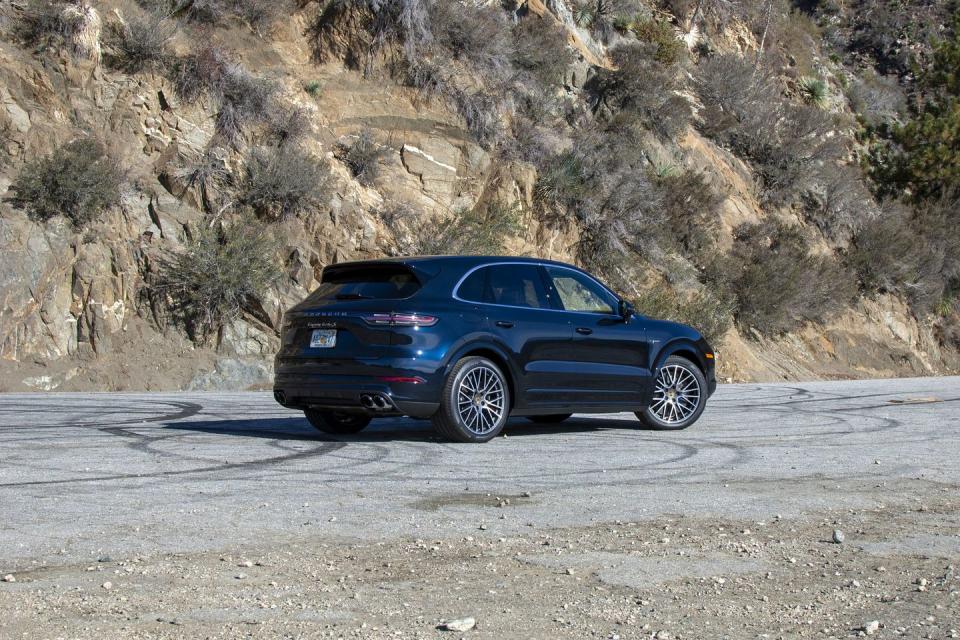
Extraordinarily fun, though? Well. Perhaps the enjoyment presents itself in a more intellectual sense. This is not a car to go chasing that zen-like state of oneness with the machine and the road. This Cayenne is entertaining, but not transcendent. The reality here is that the hybrid system doesn't add much for spirited driving; you're aware of some added thrust on the straights between corners, but it doesn't feel vastly quicker than a regular Cayenne Turbo.
Porsche's latest hybrids set odd expectations. You assume a Cayenne or Panamera with nearly 700 horsepower will feel like absolute rocket ships. But while they're extremely quick, their real-world performance isn't much better than their ICE-only counterparts. Their real benefits come with day-to-day use, despite horsepower figures suggesting otherwise.
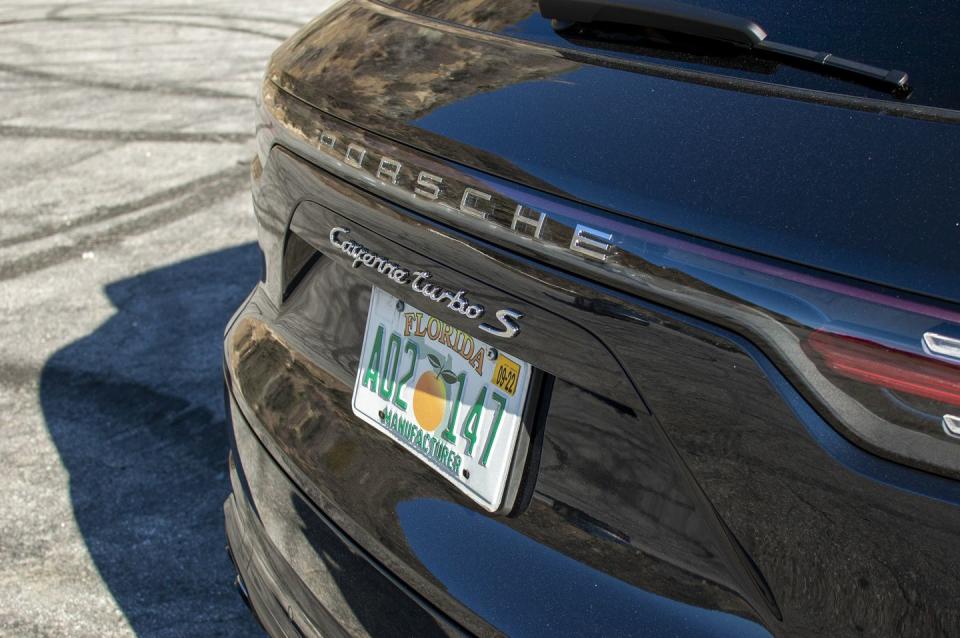
Going hybrid makes owning a car like this, and enjoying its V-8, a little less gluttonous. The need for regular battery charging, like all PHEVs, cannot be stressed enough, but the Cayenne Turbo S can be a genuinely efficient around-town machine. A 36-mpg run might not impress a Prius owner—and a 13-mpg canyon run certainly wouldn't—but all in all, it's very good for a vehicle like this. And the extra versatility of this versus, say, a Taycan Turbo makes the Cayenne Turbo S an appealing proposition.
It's also a fascinating reflection on our world, the things governments mandate, and the things Porsche customers want. In essence, everyone wants everything.
You Might Also Like

 Yahoo Autos
Yahoo Autos 